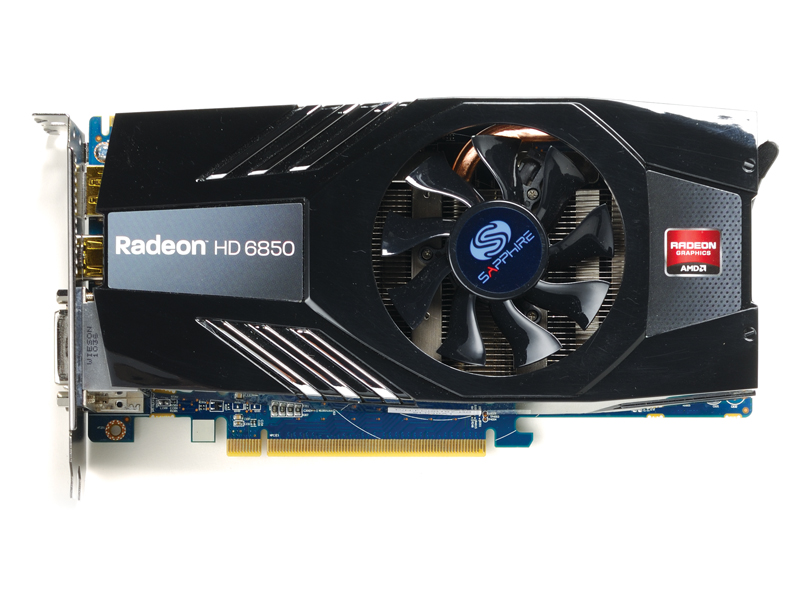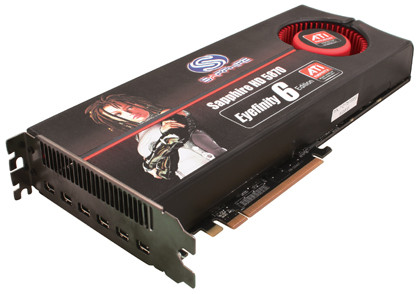Graphics cards compared: 10 rated

There's one component in your machine that will be superseded by faster and more powerful versions quicker than any other, and that's the graphics processor.
The graphics card is the supermodel part of any modern gaming PC. It, more than anything else, makes your games look beautiful and run as smoothly as a baby's velvet smoking jacket.
So, if you're a gamer and you've got a bit of cash to spend - it's time you looked at some graphics cards compared and rated.
After all, forking out the lot on a new graphics card is the best way to up the frame rate of your favourite games and make the girls think you're attractive, right?
Unfortunately, that's not necessarily the way the graphics game works. The top-performing rigs are always the most well balanced. Put a Ferrari engine into a Mk1 Golf GTi and it will go fast, sure, but you'll fly off the first corner you come to and probably make someone an orphan.
To a certain extent, it's the same with a PC. Obviously it's not going to career off the desk and decapitate a passer-by, but using the fastest graphics card in the world for your rig isn't always going to make it the best machine.
There are a number of key considerations to think of before spending an obscene amount of cash on a GPU, or a pair of GPUs. Number one is, naturally, can you afford it? But we'll skip the personal economics lesson for now.
Sign up for breaking news, reviews, opinion, top tech deals, and more.
The second issue is, can you get the most out of it? This is a multi-part question, though, and covers the size of screen you're running, possible bottlenecks in your system (such as OS, CPU and memory) and whether your power supply can handle the extra draw that comes with a top-end graphics card.
Then it all comes down to which card, or combination of cards, suits you best. This is the key point – do you go for a single, high-performance model or opt for a (possibly cheaper) multi-GPU solution? It's all a bit complicated, isn't it? But have no fear: we've handcuffed ourselves to the test-bench and won't move until we've tried the top 20 graphics setups around today.

Both Nvidia and AMD have released their most expensive and powerful graphics cards ever in the last few months. With the launch of the GTX 590 (Nvidia) and Radeon HD 6990 (AMD), the top of the market has never looked so good. But how do you get the most out of such outrageously priced components?
You want to make sure that, if you spend the best part of £600 on a graphics card, you're wringing as much potential as you can out of it. The one thing a top graphics card such as the dual-GPU GTX 590 or HD 6990 wants is a high-end display setup. A good, high-resolution desktop is going to push your expensive silicon to up its game, and will make sure you get the most out of its pixel-pushing prowess.
Buffering up
Both of the latest dual-GPU cards from the big-name manufacturers come with a frankly huge amount of graphics memory. The GTX 590 has a chunky 3GB of GDDR5 and the HD 6990 a positively bloated 4GB. It's these large frame buffers that help enable the cards to output at the crazy resolutions afforded by the multi-screen setups AMD and Nvidia are championing.
Just how much the frame buffer means is shown by the GTX 460. That appeared in both 768MB and 1GB trim, with the former version significantly worse at higher resolutions than its memory-laden brother. Either of them will breeze through any game you throw at it if you're running at resolutions such as 1,280 x 720, and even up to 1,680 x 1,050. But as soon as you go past the 1080p resolution of 1,920 x 1,080, lower-end cards such as the 768MB GTX 460 will start to struggle.
This is what you get when you drop £600 on a graphics card, then: the knowledge that it will cope at pretty much any resolution you throw its way.
Five stars
When AMD released the HD 6990, it came out blowing the trumpet of quint-screen gaming. For those who aren't aware of the phrase we just made up, it means five screens with a possible resolution of 5,400 x 1,920. That's five 1080p screens running in portrait mode, connected together.

The GTX 590, on the other hand, can only cope with three screens. It is, though, the first time Nvidia has released a single-GPU card that can output to more than two screens. Either way, it's a huge amount of screen real estate to play with.
If your graphics card can cope with that scale of resolution madness then you're surely onto a winner. You do have to be careful, though, because there aren't many games out there capable of taking full advantage of such screen size. Most can cope with the 30-inch panel's native resolution of 2,560 x 1,600, but few are able to deal with multi-monitor setups.

Take a look at the Dragon Age 2 screenshot AMD supplied with its HD 6990 press material – with half of your HUD on screen one and the other on screen five, you're going to get whiplash fast.
Some games have been coded with the likes of AMD's Eyefinity panoramic technology in mind. They offer the chance to keep all the HUD elements on the central screen while still affording you the ultra-widescreen format. Five screens might be pushing it a little, but a three-screen setup capable of 1080p and above in portrait mode would be hitting the sweet spot.
There's one more thing to be aware of with a portrait setup, and that's the screen technology used. You'll need to make sure the monitor you choose has a decent viewing angle; something the traditional TN panel can't offer.
Ideally, then, you'll need to splash out on the more expensive IPS panels. Otherwise, the vertical viewing angle, which becomes the horizontal angle when put in portrait mode, will seriously impede your image quality.
Space to burn
So, once you've made sure the display setup is in place, how do you ensure that your rig is up to the task? The first thing may seem obvious, but it's all about space. High-end graphics cards or multi-card setups need a lot of that.
The Radeon HD 6990 is the same size as the HD 5970 and, as such, is one of the longest cards you'll find on the market. It's worth making sure your chassis is capacious enough to cope with the extra few centimetres the big cards need.
On the next tier down, the HD 69xx cards are fairly chunky too, with the Nvidia models coming in a bit shorter and more likely to fit. Testing on a mid-size CM Storm Scout chassis, we found we could easily fit a GTX 580 inside. On the AMD front, though, the fastest card that would fit the case was the HD 6870.
That's not the only consideration, though. If you do manage to squeeze an HD 6990 into your case, you'll have to make sure there's enough airflow to avoid the thing suffocating and its silicon brains melting out of the choked vents. Top-end cards are, essentially, electric fan heaters. The amount of heat they generate can be directly attributed to the amount of power they need to run, so something like the GTX 590 is going to push out a lot of heat.
The new dual-GPU cards from AMD and Nvidia have both been set up with a symmetrical cooling design. Unfortunately, that means that just as much hot air is blown into the case as is vented out of the back.
The problem isn't quite so bad with multiple graphics card setups because, as with a single-GPU card, you can vent directly out of the back. Multi-card rigs will need to have space to breathe too, especially between the cards. If they're stacked on top of each other then you're going to end up with some seriously hot silicon.
The next concern is just how much power you're going to need to keep your graphical behemoths juiced up. Multi-GPU cards and SLI or CrossFire arrangements need an extraordinary amount of power just to get them up and running.
With something like the GTX 590, Nvidia recommend a 700W PSU as a minimum. If you're looking at the HD 6990 or a dual-GPU GTX 580 setup then you're probably going to need an 850W power supply.

Before you go out and spend the cash on a 1,500W PSU, though, it's worth remembering to make sure you've got enough spare capacity, because an under-used high-end supply is far more inefficient than a lower-capacity unit running at the same power draw.
So a 700W supply drawing 500W is going to be much more efficient than a 1,500W PSU drawing the same 500W. PSU inefficiency means wasted energy, and that means excess heat. With high-end graphics cards, that can be dangerous.
Letting the side down
As well as checking ratings to cover the amount of power a particular card needs, there are other concerns. The latest dual-GPU cards make serious demands of your PSU's 12v rail.
Both the HD 6990 and GTX 590 have been designed to stay below the 375W maximum the twin 8-pin PCI Express power connectors and motherboard PCIe bus can supply, but when you factor in overclocking, that goes straight out of the window.
The HD 6990 comes with a BIOS switch that boosts the core clocks to the same settings as the HD 6970 GPUs the Antilles chips are based on. This increases the power draw to insane proportions, and can overload the 12v rail in lesser PSU lights.
We spoke to one of Enermax's PSU engineers about this at launch, and he explained that customers need to consider two things when purchasing a PSU for top-end graphics cards: "The PSU should be equipped with OPP function, and should have a strong 12v line, or lines."
OPP means 'Over Power Protection', and this technology shuts down the PSU if the graphics card is demanding more power than the 12v lines can give. So you don't get a cascade failure effect if the PSU falls over.
Another key consideration is your CPU. If your processor can't cope with the pace of your new graphics giant then you'll end up with a bottleneck in the system. This means that your expensive bit of silicon will be sitting there twiddling its transistors, waiting for the laggy CPU to catch up. A modern, multi-core CPU ought to be able to cope with anything a new game can throw at it, though.
Granted, a lowly AMD Athlon II dual core will still give you a bottleneck, as will a sub-2GHz Intel Core 2 Duo, but any Phenom II quad or Core i5 should keep things ticking over nicely.
Double trouble?

So, you've made sure your chassis can house a beefy graphics setup, you've sorted out a power supply that won't collapse and turn the insides of your gaming rig into pricey slag and you've got a decent processor at the heart of your machine so the graphics don't get ahead of themselves. Now, what sort of high-end graphics setup do you want?
The options at the pricey end of the market are fairly wide ranging. At the very top you're looking at CrossFireX and quad-SLI setups, with four of AMD or Nvidia's top single-GPU cards being thrown together on one motherboard. That will create a graphical array more than capable of the highest resolutions games will realistically play at.
It's also entirely possible that it will create a black hole. In your wallet, that is. It's this sort of setup that makes the single PCB, multi-GPU cards more attractive, and seem like better value. That's quite a feat considering they cost about £600 themselves.
The benefit of these single-card solutions is that they take up far less space inside your machine. And if you're an Nvidia fan who's not blessed with an SLI-ready motherboard, you can now run a twin-GPU setup. If you do have an SLI-ready motherboard, though, and one that will happily support quad-SLI, then you could drop a pair of GTX 590s in for some serious graphical action.
The paucity of SLI-certified motherboards is only one of the problems with multi-GPU arrays, though with AMD's Bulldozer boards looking increasingly likely to support SLI, that situation could change.
But, still, driver problems persist when you add extra graphics processors. More often than not you'll find that the latest games don't work, or that you don't see one of your GPUs at launch. Then there's a wait for the driver issues to be sorted out by the relevant manufacturers.
This isn't an exclusive problem to either Nvidia or AMD – they're both as bad as each other now. A fast, single-GPU card will save you headaches down the line, then, as well as a fair bit of cash. But if you absolutely must have the highest frame rates then multi-GPU options are the way forward.
Looking down the spectrum and pairing up a couple of lower-end GPUs, such as a couple of GTX 460s, will net you performance that will make anyone who forked out for a GTX 580 a little green around the gills. Why stop at two GPUs, though?
The performance of twin cards has gone through the roof in recent years, to the point where we're close to doubling the performance. But, unfortunately, adding in more cards is very much a case of diminishing returns. With the performance boost you get, the second card is totally worthwhile. A third or fourth addition, though, will barely register.
We tested a pair of GTX 590s and a pair of HD 6990s and it was rare indeed that we saw a significant improvement in performance. Heaven 2.5 was the only benchmark that used the four GPUs properly, nearly netting double the performance. The rest of our benchmarking suite ably showed just why SLI and CrossFire performance is so hit and miss.
Aliens vs Predator only showed an increase with Nvidia's GPUs, Lost Planet 2 gave extremely poor returns and DiRT2 went backwards when we dropped in a second HD 6990.
Up the resolution

Finally, it's important to consider what you're going to be using your high-end graphics setup for: gaming. The problem at the moment is that because of the cost of games development, most publishers are focusing their efforts on the consoles. That's where the big profits lie.
The PC is more powerful than any console, a fact shown by all the recent TV ads for multi-platform games, clearly using PC footage to make sales. Unfortunately, though, PC games are still being held back by the lowest console denominator – it's simply not worth the developers' time to push a game for PC hardware.
So we come back round to the start, and what it is that's going to really take advantage of your serious graphics hardware. Namely, large resolutions. At normal resolutions of 1680 x 1050 and 1920 x 1080, PC games are still quite a way from really pushing top-end GPUs. It's only when you jump into the upper echelons of 2560 x 1600 and above that these expensive beasts start to come into their own.
Should you go out and buy a seriously expensive graphics setup? If you have a hankering for some crazy screen real estate, then hell yeah. If not, you might not need to part with £1,200 for a pair of GTX 590s.
There's still a wealth of graphical options lower down the scale, though. We've benched 20 different setups to give you the lowdown. Turn the page to find out what we've discovered in testing.
- 1
- 2
Current page: Graphics cards compared: what to look for
Next Page 10 top gaming graphics cards compared